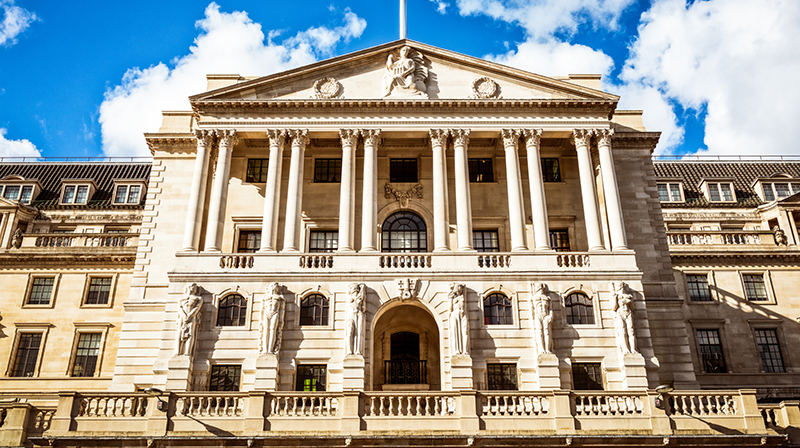In early July, the UK government issued a two-year bond with a yield of 5.668% – the highest level offered since 2007. For a decade and a half, investors have been forced to operate in an environment where there was no real alternative to equities or higher-risk bonds to achieve long-term, inflation-adjusted returns. Now, the question has flipped. With the double-digit losses of 2022 still fresh, why would investors look beyond these safe haven assets?
Most investment managers agree that gilts look better value than they have for more than a decade and represent a sound source of income and diversification in a portfolio. The Bank of England appears to be drawing to the end of its rate rising cycle, with governor Andrew Bailey indicating future rate rises will be data-dependent. Equally, many investors are unwinding long-term underweight positions in the gilt market, which should create buying momentum. Invesco, for example, noted UK gilts were its second strongest category for fixed income inflows in July, with $1.5bn (£1.2bn) invested in gilt ETFs.
“Gilts should now behave as a great diversifier in a diversified investment portfolio by declining in yield when riskier assets sell off during continued volatility,” observes David Zahn, head of European fixed income at Franklin Templeton.
“Investing in gilts at current yield levels gives investors the opportunity to earn the yield carry without the credit risk or corporate credit. In addition, gilts are one of the highest-yielding high-quality government bonds in the world, which should provide support from both domestic and international investors. Lastly, investors have correctly been underweight fixed income – specifically gilts – for many years”.
Nevertheless, it is worth noting the attractive yields in gilts are not universally available. As Kelly Prior, investment manager in the multi-manager team at Columbia Threadneedle Investments, points out: “Gilts now give you an income of more than 5%, but only at the ultra-short end – that is to say, cash and very short-dated. Go out even a year or two beyond this and the yield starts at 4%.” Although this is not be sniffed at, she notes, it is still some way behind current inflation levels.
As such, there is still a need to look for higher yields within fixed income. “The real return of gilts – adjusted for inflation – is negligible in the short term, and possibly just acceptable provided we go out along the curve,” says Prior. “Much of this depends on where inflation goes, however. As such, we still need to try and improve on this if we can – and this is where the corporate bond market plays a role.”
See also: Calastone: Equities funds shed £1.19bn in August as money markets soak up more cash
Fragile economy
Corporate bond spreads do not look particularly wide in relative terms and there has been some concern they do not sufficiently reflect a weaker economic environment. Zahn, for example, believes that while sterling corporate bonds look attractive on some measures, the reduced credit spread does not always compensate for a fragile UK economy.
In absolute terms, however – and exercising a degree of selectivity – there are still attractive options. “There are many corporate bonds of investment-grade quality that are yielding much more than 5%, which is to be expected as the risk/reward ratio of government debt compared with corporate debt would warrant a higher return profile,” points out Richard Philbin, chief investment officer at Hawksmoor Investment Solutions.
“Remember too, when considering fixed income instruments, that the yield is only one aspect of the total return profile – there is the coupon, the price, the duration and the credit quality. A 2% or 3% uplift in yield compounded over time can add significantly to total return.”
Prior agrees, adding that investors are not buying the market unless they are using funds that look to replicate the index. “The composition of bond markets is driven by weighting – the more debt you have, the greater the weighting in the indices,” she continues. “Barclays has one equity, but thousands of bonds offering different levels of income, currency and volatility. Security selection matters more than it has in a long time in the bond world.” Emphasising the point, a recent report by Man GLG showed that, in the investment-grade universe across the Europe, UK and US markets alone, more than 1,000 bonds were priced with a spread above 300.
See also: Soft landing or soft economy – what do rising bond yields signal?
Credit opportunities
Equally, better and better opportunities may be emerging in the corporate bond market as companies are forced to refinance at higher rates. “We are waiting for that primary market to revive so we can pick up good-quality assets,” says Jean-Yves Chereau, a partner at J Stern & Co. “There are some opportunities in emerging markets, where balance sheets are in good shape and where companies have reasonably good management teams.”
He believes there is likely to be more primary-market activity in the second half of the year, noting that, while some companies will be able to defer refinancing, this is unlikely to be a luxury afforded to everyone. “It is also important to get duration right,” adds Chereau. “For a long period of time, very short maturity bonds made sense,= because investors did not want exposure to a potential shift in the interest rate cycle. Now that shift has come, it makes sense to add duration.”
Areas of vulnerability can, in his view, be readily avoided. “We recognise there is a slowdown but the economy is doing OK and there is unlikely to be a deep recession,” he says. “The consumer is under pressure – as can be seen with the bankruptcy of groups such as Wilko in the UK – so investors definitely need to avoid companies where the business model is trapped in the past. That said, some of the areas that had looked very risky during the Covid period, such as airlines, are bouncing back.”
Changed landscape
Higher gilt yields do not just change the decision-making process for bonds – the impact on the risk-free rate changes the whole investment landscape, in turn changing the relative appeal of specific equities. “With a higher risk-free rate, the discount rate can also change significantly, depending on the company,” says Hawksmoor’s Philbin. “This can therefore affect the price-to-earnings [PE] ratio and the payback and attractiveness of the asset.
“As interest rates rise, the attractiveness of higher growth assets becomes less appealing as the payback period increases, which should make value investments more attractive as they generally have a cashflow and profit stream that means dividends can be paid. Usually, value equities also have a lower PE ratio to start with, which should make the payback period less – and the growth prospects from a capital perspective correspondingly less too.”
Assets such as infrastructure have also struggled in the face of rising interest rates. For some time, with fixed income out of the picture, infrastructure was a key source of income for investors. Infrastructure investment trusts have been struggling, however, as assets have revalued in the face of a higher risk-free rate, but also where flows have drained out to other asset classes, notably fixed income.
“For bond-proxy assets, such as infrastructure, there has certainly been a repricing – and rightly so, given the yield comparisons,” says Prior. “Where you are invested also matters, though. Regulated utilities have the ability to raise prices in line with inflation and are not at the mercy of power price models. ‘Dull and boring’ has got cheap so, in the event of a trickier economic phase, their reliable cashflows will be a good defensive play with capital upside as an added bonus.”
While the high yields on offer in the gilt market have an allure, investors should not neglect other parts of the fixed income market, which still have a role to play. Higher gilt yields should inform investment selection across the spectrum, however, with the relative appeal of other asset classes impacted by the shifts in the fixed income market.
See also: Why high yield is no longer the Wild West of bond markets







